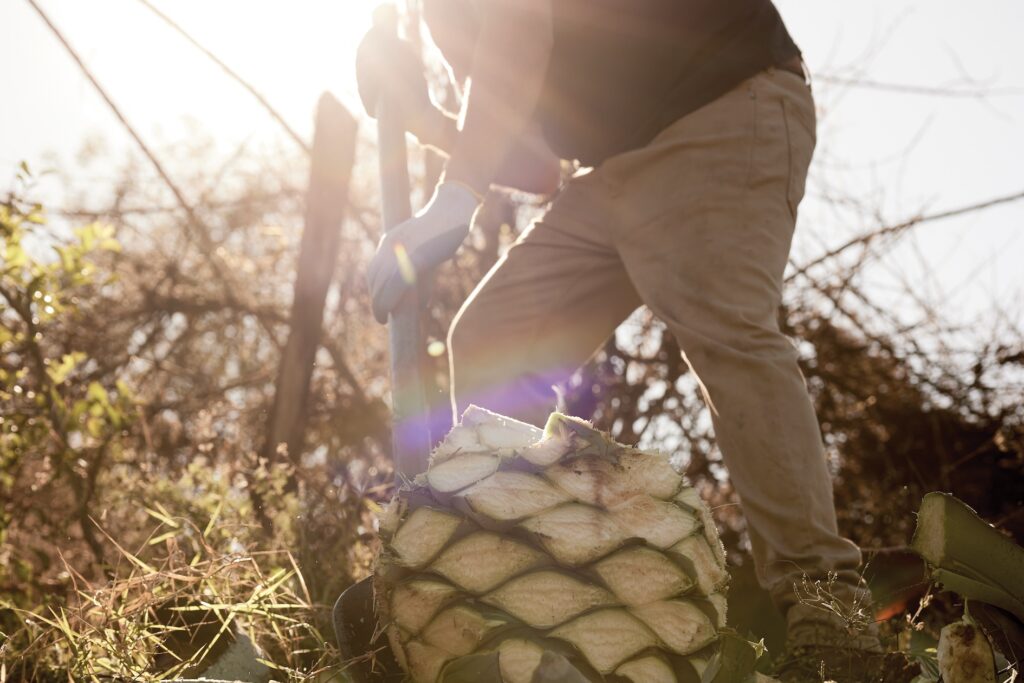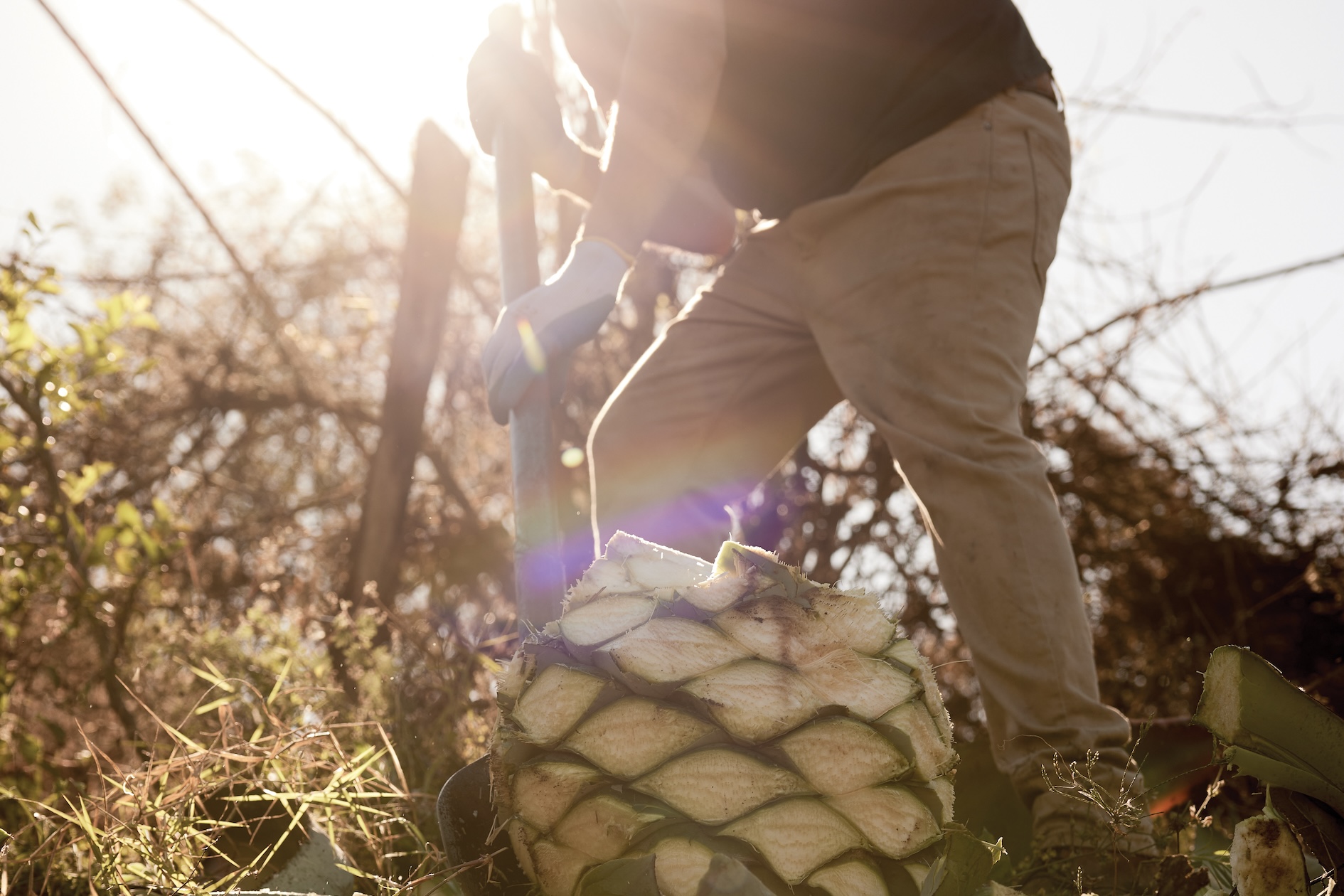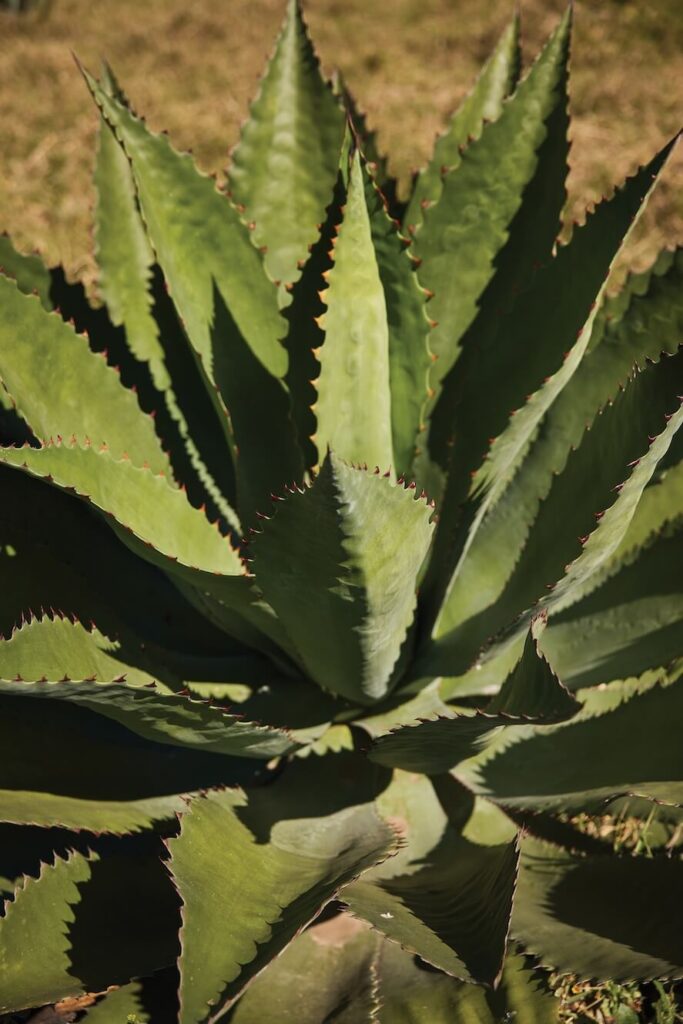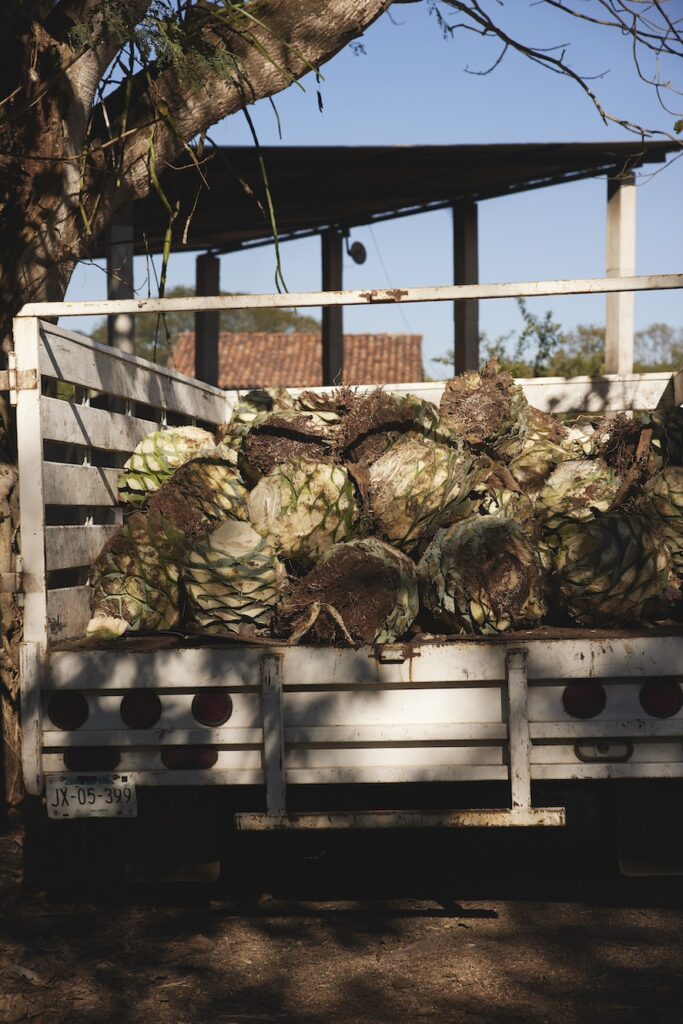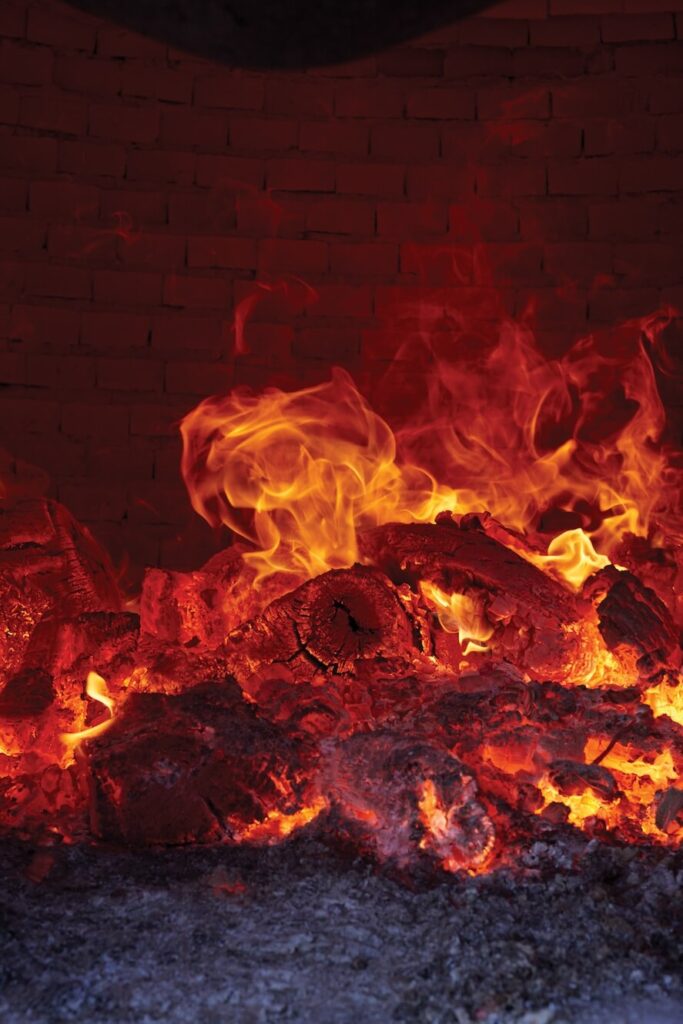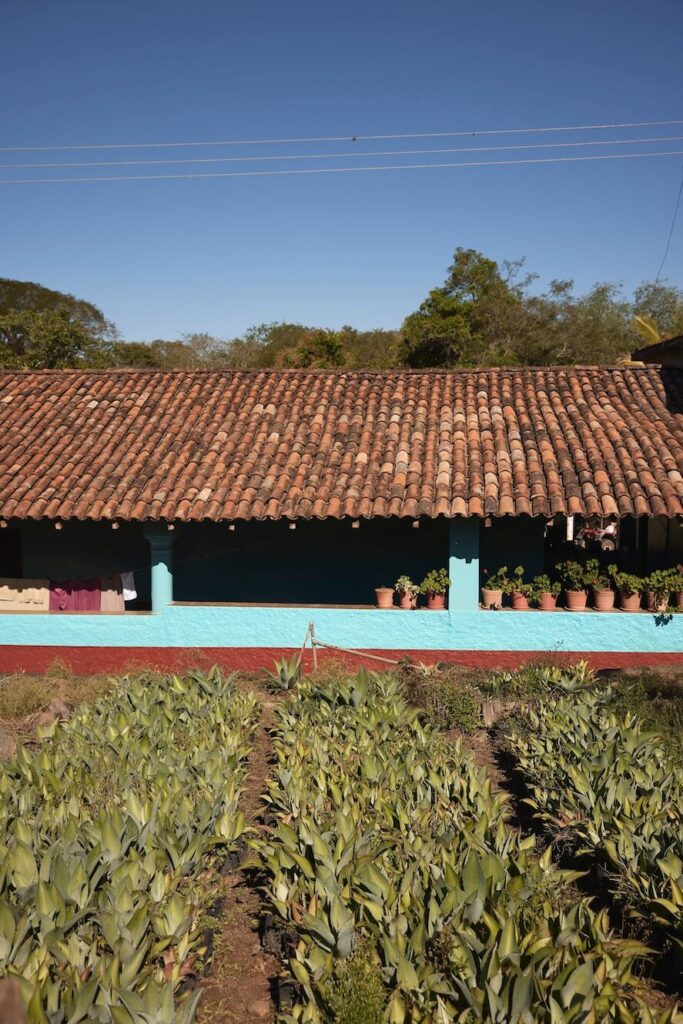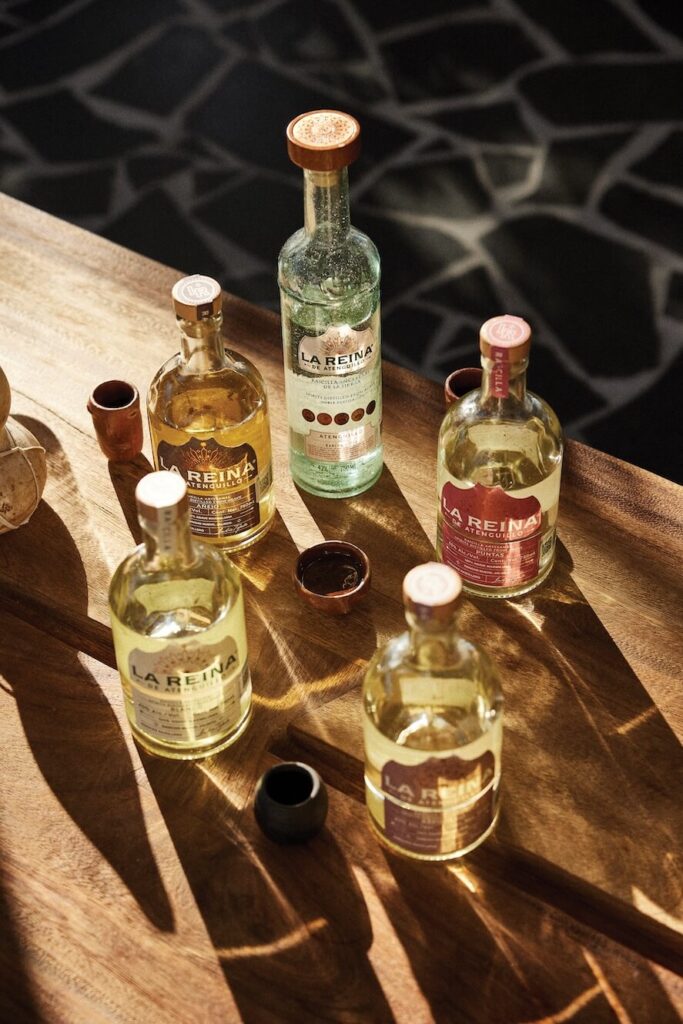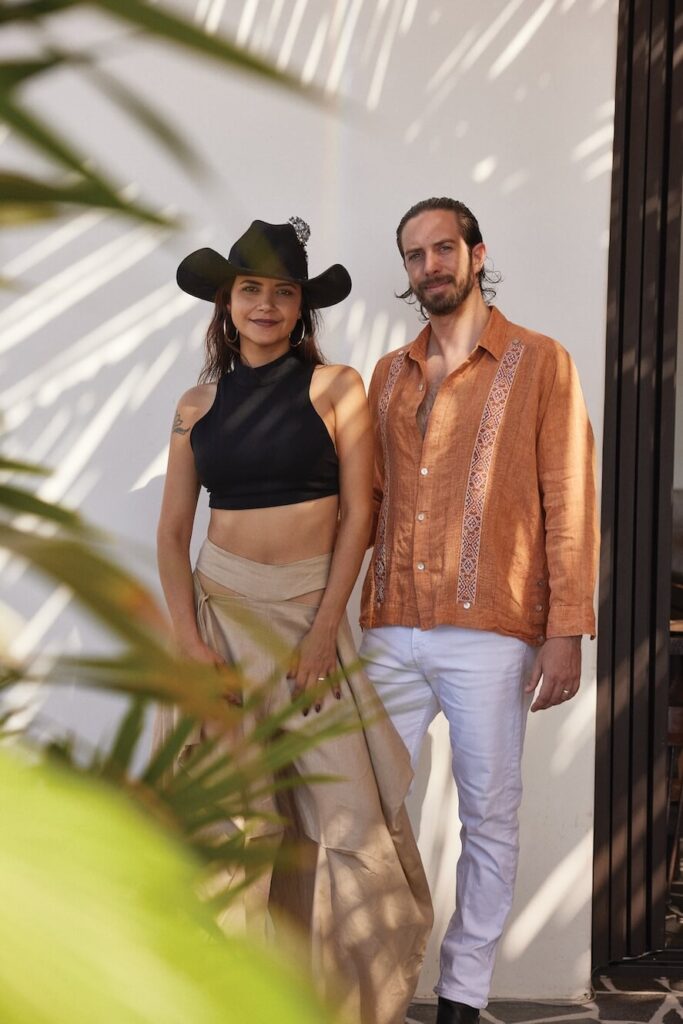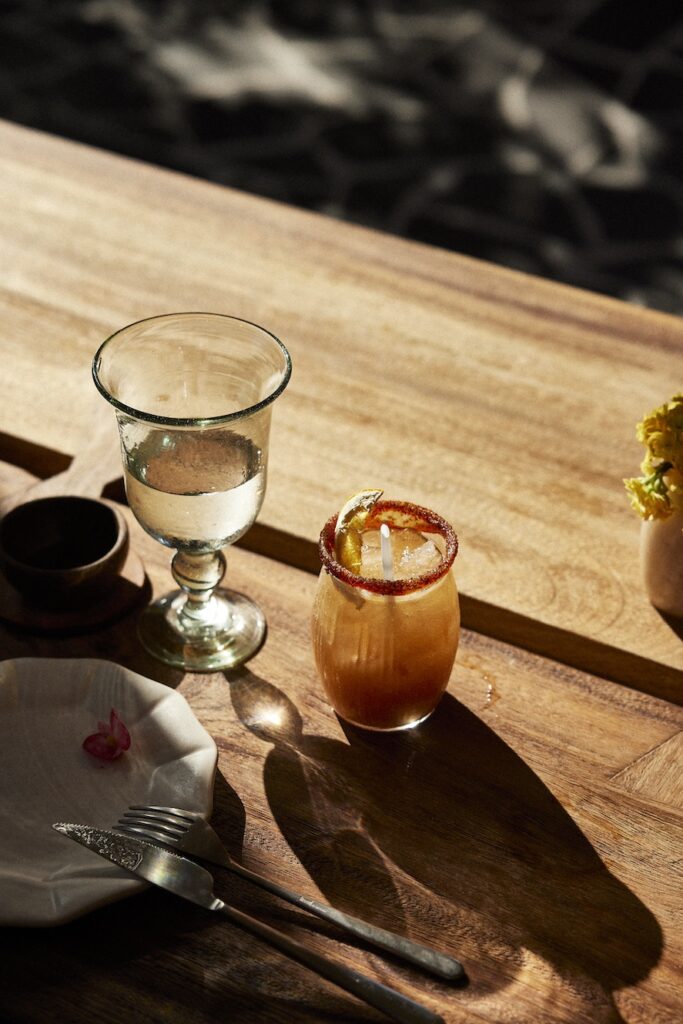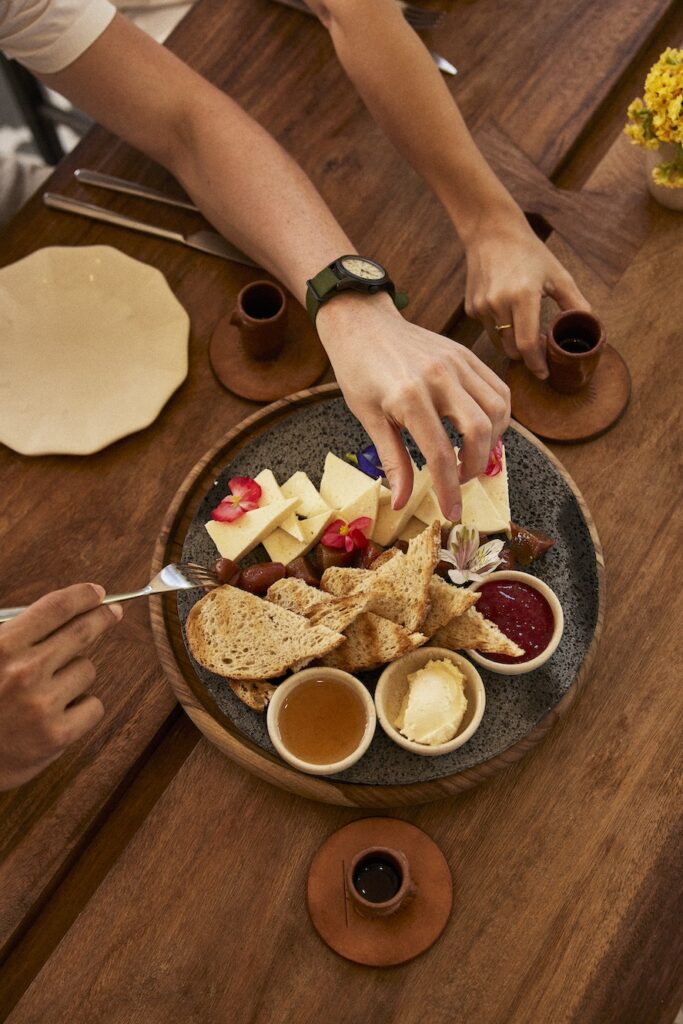If mezcal, the Mexican spirit that won over cocktail connoisseurs with its signature smokiness, is cooked like a brisket—with the agaves that compose it smothered in an open-earth pit to seal in the flavor—then raicilla, its upstart cousin, comes about like a hearth-roasted vegetable.
At least that’s the comparison favored by Rio Juan Chenery, the founder of Estancia raicilla, to differentiate the colonial era agave drink he produces from its more widely known analogs.

At his rough-hewn distillery in the mountains that rise over the resort city of Puerto Vallarta, Mexico, he shows me the three domed ovens where the local variety of the agave plant, the mint green maximiliana, is baked for two days, before being mashed, fermented, and distilled into the fragrant, clear raicilla.
Made of adobe mixed from the region’s red soil, the ovens are fed before dawn with oak logs that will impart a slight char. After eight hours, once the flames reach a height where they move in slow motion, workers toss agave hearts in through a hole in the back like an arcade basketball game, and the oven is patched shut. At times, the pressure inside grows so great cracks form on the surface that must be smoothed over with mud.
Rio Juan Chenery and his wife, founders of Estancia raicilla.

The result is a fresh and bright spirit with a pungency that tickles the nose as it kicks in the throat. The taste is more nuanced than tequila—with floral and grassy notes unique to the maximiliana—and more subtle than mezcal.
“You can smell it from far away,” says Chenery, an Australian whose family in Puerto Vallarta introduced him to the drink. “Yesterday, we were drinking in San Pancho, and my wife brought in a small glass of raicilla and,” smelling it in the air, “I said, ‘Ah, where’s the raicilla?’”
It’s a question you may start hearing more frequently at the buzzy cocktail bars and hip supper clubs. Since Chenery became one of the first to sell raicilla outside of its native Jalisco ten years ago, more than a dozen brands have followed suit.

In the years since mezcal first accustomed drinkers’ palates to more sophisticated Mexican flavors, a new generation of distillers and brewers moved into the mix, bottling drinks with indigenous ties and exotic ingredients. Regional moonshines, fruity ferments, and local takes on age-old European liquors now line the shelves at innovative bars around the world, appealing to a growing niche that’s looking for more story and heft when they sit down at the counter.
In its earliest days, raicilla—which under Mexican law can only be made in the state of Jalisco and one part of its neighbor, Nayarit—was the homebrew of the area’s gold and silver miners, made out of the maximiliana to skirt protectionist Spanish colonial alcohol rules. The ovens of that time were built straight into the side of the steep-rising Sierra Madre Occidental mountain range.


While the spirit of the backwoods remains, raicilla production has gone mainstream: A decade ago, about 80,000 liters of the drink was distilled each year. Now, according to Álvaro Fernández Labastida, head of the main raicilla industry association, producers bottle more than half a million liters annually. Some years, demand for raicilla is so great that by the end of rainy season—when daily downpours mean the especially absorbent maximiliana is too waterlogged to harvest—real raicilla is scarce.
“It’s just a small amount that’s produced. Tequila produces 500 million liters a year. But for the industry, it’s a very big growth,” Fernández explains. “What’s made is sold. We’ve got nothing in storage.”

Much of the production falls along the so-called raicilla route, a stretch of switchbacking highway that wends through the Sierra Madres, connecting spare cobblestoned villages, like Atenguillo, where Ana López, the founder of La Reina raicilla, grew up.
As she serves a glass of her brand’s smooth blanco expression, she tells me how she used to bring a bottle of raicilla with her to parties during her college years in Guadalajara, Mexico’s second largest city, even though no one had heard of the hinterland drink. “When you drink it, you get more talkative, you get more creative, you become more connected,” López says.

She can see the transformation in real time from a breezy tasting room at Susurros del Corazón, Auberge Resorts Collection’s property in Punta Mita, where she offers an “Origins of Raicilla” experience, a pairing of five of La Reina’s varieties with sweet guava candies and a local cheese. Over the hour-long tasting journey, as generous pours collect on the table—from the rare ancestral line distilled in the hollowed-out trunk of an ash tree to the 110-proof Puntas, a favorite—“people become like family,” says Juan Pablo Mercado, López’s husband and a co-founder of La Reina.
If there’s another Mexican liquor set to break out for savvy drinkers, many insiders have their money on sotol, a brassy spirit from the country’s desert north that’s accumulated centuries of legends.
The origins of the drink, made from the spindly dasylirion succulent, date back to the pre-Hispanic days: archaeologists excavating the Paquimé ruins in the Mexican state of Chihuahua have found evidence that sotol was cooked there.

But in more recent times, sotoleros were treated like outlaws. Mexican prohibition laws, mirroring the temperance movement on the other side of the border, shunted the liquor’s production underground, nearly killing off the ancient tradition. Distillers recall relatives subjected to violent roundups. Local lore proposes that Al Capone used to smuggle it north.
It’s all part of the allure that has driven sotol’s commercial revival since the first legal licenses for its production were issued in the 1990s.
Go to a rooftop party in Mexico City or swim-up bar at Susurros today, and a bottle of Sotomayor sotol, one of the first brands to go to market widely, is a staple on bar carts. Isidoro Guindi, the line’s founder, says he likes it mixed in a cocktail with lemongrass and green apple.

But if a smoky finish remains the country’s cocktail calling card, distillers in the capital are also beginning to experiment with traditional aperitifs and botanicals, adding a dose of Mexico City cool to urbane European drinks.
There’s Primo, a stepped-up Aperol made from local oranges and grapefruits, and Pastis de México, a spin on the south-of-France anise essential. And then there’s Condesa Gin—named for the leafy zone of Mexico City brimming with fashionable dining and art—which was started in 2021 to prove that the city could compete on the world stage with the austere European strongholds of gin.
“They sort of had this claim to the origins and cultural augustness of gin,” says Ben Brooksby, one of the brand’s founders. “The idea was to use Condesa Gin to plant Mexico’s flag in that space and say Mexico City is on par with these global capitals and can make a world-class gin.”

They’ve done that by infusing their batches with aromatics emblematic of the country, like prickly pear cactus and palo santo, a tree from the Yucatan that shares chemistry with citrus fruits. The recipe also calls for a mystical element: each of the botanicals selected pays homage to the rituals of traditional healers, or curanderos, around Mexico City.
In a limpia, or ceremonial cleansing, curanderos bundle aromatics like lavender, rosemary and sage, dip them in water and pass them over the person they’re treating.
Take a sip of some Condesa Gin mixed with tonic and you’ll feel why: the cocktail is transcendent, a combination of deep-rooted flavors and inventive practice sure to upend expectations.
Maybe it’s time to update the old adage—one tequila, two tequila, three tequila, no more. There are more exciting spirits now heading north for those who know where to look.
